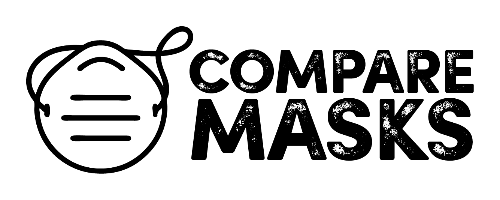A surgical or medical mask protects health workers by filtering out bacteria. They are water-resistant and usually sterile (germ-free).
Respirators (non-medical) masks are intended for filtering out different sized particles. N95 Respirators are a more tight-fitting face mask. In addition to splashes, sprays, and large droplets, they can also filter out 95 percent of very small particles – this includes viruses and bacteria.
Face coverings can be any sort of fabric (including bandannas, hijabs and t-shirts) worn over the face.
Face coverings help by catching the small droplets we sometimes spread when we talk or cough. These can contain coronavirus (COVID-19) and land on surfaces and other people. This can be an issue if someone has the virus, but no symptoms. By wearing a face covering you protect those around you – and they protect you by wearing theirs.
To comply with UK travel regulations active on June 15th, any face covering will do – however, because your face covering is likely to be untested you can’t be sure of effectiveness (although it is better protection than not wearing one at all).
Higher levels of protection cost more, so select the cheapest mask that has been tested to the level of protection you need.
You can even make your own!
You must wear a face covering at all times. Face coverings include all types of masks, but can be as simple as a cloth that covers the nose and mouth. These can be made using items and material you may have at home already, such as scarves, bandannas and t-shirts.
Putting your face covering on
Wash your hands. Don’t touch your face or face covering with unwashed hands or gloves. Put the covering on without touching the front of the covering, and ensure loose ends are tucked away when you have it on.
Taking your face covering off
Remove your face covering trying not to touch the front or face covering area. When you have removed it, store it in a plastic bag until you have an opportunity to wash it. Make sure you wash your hands for at least 20 seconds with soap after handling your face covering.
Washing your face covering
Face coverings can be washed as part of your laundry and using your normal detergent.
Make sure you wash your hands after handling a used face mask and avoid touching your face and eyes. Once removed make sure you clean any surfaces the face covering has touched.
Face coverings do not offer the same protection as Personal Protective Equipment (PPE) or medical face masks – these are used in very specific circumstances like health and care settings.
A surgical (medical) mask has been tested to an specific European (EN14683:2014) or American (ASTM F2100) standard – there are three grades of medical masks that offer progressively increased protection. Respirators (non-medical) masks are typically tested to European standard (EN 149:2001+A1:2009) and are named FFP1, FFP2, and FFP3. Face coverings have typically not been tested.
Disposable masks should be thrown away after each use. Shelf life should be indicated on the packaging – this can vary but may typically be around two years. Some respirators have disposable filters, and only these need to be replaced. Cloth masks should be washed as often as possible.
All face coverings and masks will cause increased breathing resistance – this is part of their effectiveness. As the level of protection increases, so does the pressure. This may be a factor in which type of mask you select.
As far as possible, we follow guidance supplied from the UK government, the World Health Organisation (WHO), Public Health England (PHE), The US Center for Disease Control and Prevention (CDC) and other international standards. Information on specific masks is obtained from the supplier – this is always correct at time of publication but may change over time.
Medical masks in the EU that are made in sterile conditions should have a “CE” certification mark (Conformité Européenne, French for “European Conformity”).
For non-medical masks (such as disposable 3-ply masks and KN95 respirators), the manufacturer should be able to provide a Certificate of Conformity, which contains a Certificate ID that you should be able to search for on the website of the verification company.
If this isn’t available, look for manufacturers with a long trading history and good quality independent customer reviews.
Face coverings should not be placed on young children under age 3, anyone who has trouble breathing, or is unconscious, incapacitated or otherwise unable to remove the mask without assistance.
From the WHO guidelines:
“A disposable face mask is only intended for single use. We recommend replacing the mask with a new one as soon as it is damp. To dispose of a mask, you are recommended to first remove the mask from behind without touching the front of the mask. You should then dispose of it in a closed bin and clean your hands with either soap or alcohol based hand sanitisers immediately after.
There are many reputable suppliers online (such as MEDI-C) who may be able to provide a more custom solution for you at bulk rates.
